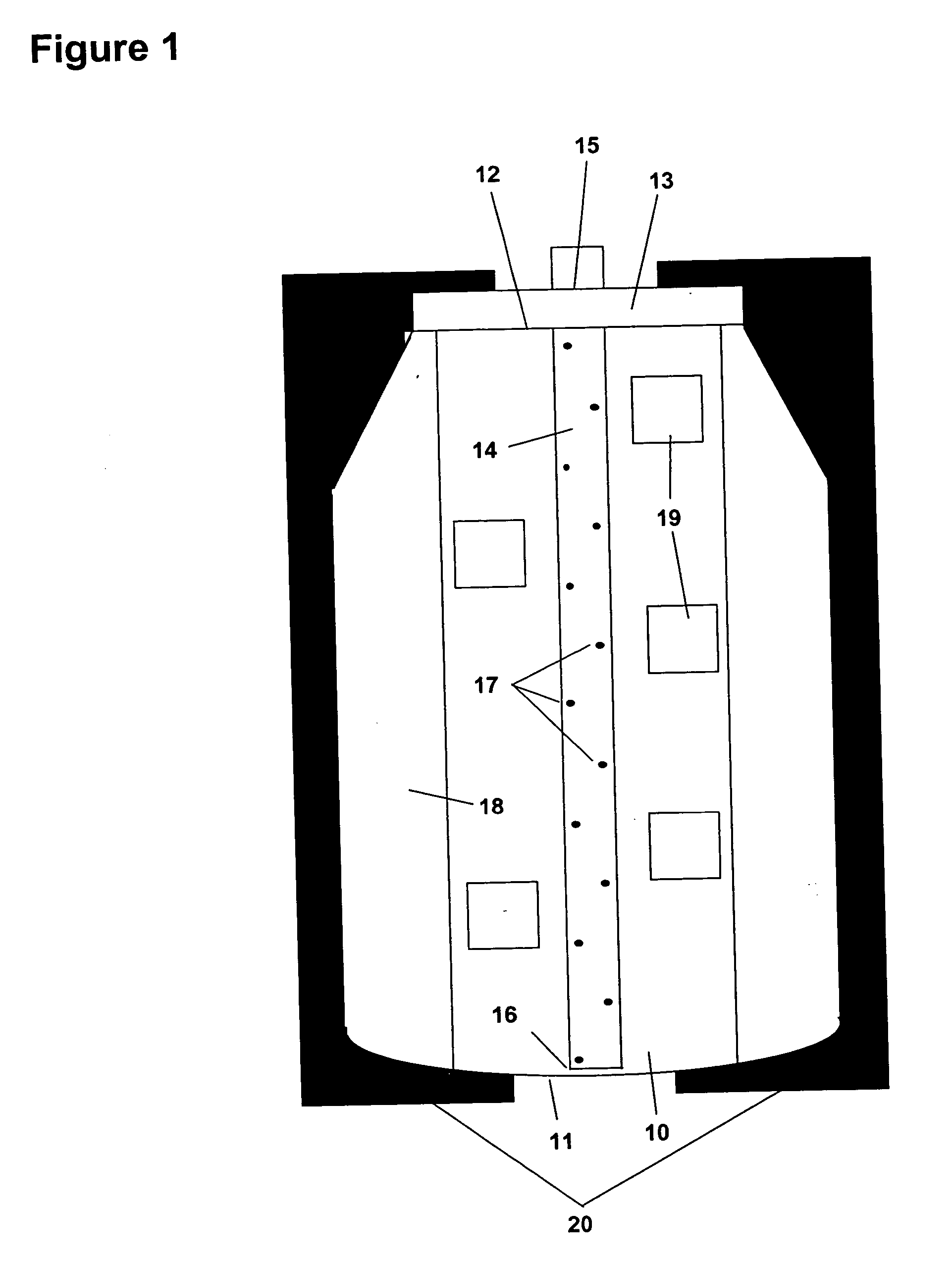System and process for biomass treatment
a biomass treatment and biomass technology, applied in biochemical equipment and processes, chemical equipment and processes, etc., can solve the problems of unmet need for commercially robust processes and equipment, and the complexity and efficiency of treatment variations
- Summary
- Abstract
- Description
- Claims
- Application Information
AI Technical Summary
Benefits of technology
Problems solved by technology
Method used
Image
Examples
example 1
Saccharification of Bagasse at High Biomass Concentration in the PEHReactor; Comparison to Low Concentration Saccharification
[0098] The PEHReactor (described in General Methods), with no attrition media, was charged with 1.27 cm-milled bagasse (370 g, dry weight basis). This sugar cane bagasse was NIST Reference Material RM8491, from sugar cane clone H65-7052, originally obtained from the Hawaii Sugar Planters Association, Kunia substation, Oahu, Hi. It was milled in a Wiley mill to pass through a 2 mm screen, with the fines (+74 mesh) removed. The reactor vessel was cooled to 4° C. by rotation in contact with ice on the outer surface. A vacuum was applied to the reactor vessel, and dilute ammonium hydroxide solution, that was pre-cooled in a cold room at 4° C. and passed through tubing immersed in an ice-water bath, was injected to give an ammonia concentration of 4 g / 100 g dry weight of biomass and a dry weight of biomass concentration of 45 g / 100 g total biomass-aqueous ammonia ...
example 2
Saccharification of Yellow Poplar Sawdust at High Biomass Concentration in the PEHReactor; Comparison to Low Concentration Saccharification
[0101] The PEHReactor, without attrition media, was charged with yellow poplar sawdust (596 g, dry weight basis; purchased from Sawmiller Inc., Haydenville, Ohio). A vacuum was applied to the reactor vessel, and dilute ammonium hydroxide solution was injected to give an ammonia concentration of 6 g / 100 g dry weight of biomass and a dry weight of biomass concentration of 44 g / 100 g total biomass-aqueous ammonia mixture. The reactor vessel charged with ammonia and yellow poplar sawdust was brought to 4° C. as described in Example 1, and rotated at 4° C. for 30 min. At this time the contents were transferred to the steam gun reactor. Once the steam gun reactor was charged with the ammonia-poplar mixture, the temperature was increased to 145° C. and the mixture was held at temperature for 20 minutes. At the end of the pretreatment time, the yellow p...
example 3
Pretreatment and Saccharification of Corn Cobs at Higher Dry Biomass Concentration in PEHReactor
[0103] Whole corn cobs were processed with a jaw crusher (2.2 kW motor) with a jaw spacing of approximately 0.95 cm, followed by a delumper (1.5 kW motor, Franklin Miller Inc., Livingston, N.J.), followed by screening with a Sweco screen equipped with a 1.9 cm U.S. Standard screen. Approximately 805 g fractured cobs were loaded into the PEHReactor. Moisture content in the cobs was approximately 7%. The atmosphere in the reactor vessel was flushed 5 times with nitrogen prior to loading. The reactor, with no attrition media, was preheated to 75° C. before the start of the experiment, without rotation. When the temperature within the reactor vessel stabilized at 75° C. the rolling mechanism in the incubator was turned on and the rotation adjusted to 19 rpm. The appropriate amount of dilute ammonium hydroxide solution to give an ammonia concentration of 6 g ammonia / 100 g dry weight of biomas...
PUM
| Property | Measurement | Unit |
|---|---|---|
| Temperature | aaaaa | aaaaa |
| Temperature | aaaaa | aaaaa |
| Temperature | aaaaa | aaaaa |
Abstract
Description
Claims
Application Information
 Login to View More
Login to View More - R&D
- Intellectual Property
- Life Sciences
- Materials
- Tech Scout
- Unparalleled Data Quality
- Higher Quality Content
- 60% Fewer Hallucinations
Browse by: Latest US Patents, China's latest patents, Technical Efficacy Thesaurus, Application Domain, Technology Topic, Popular Technical Reports.
© 2025 PatSnap. All rights reserved.Legal|Privacy policy|Modern Slavery Act Transparency Statement|Sitemap|About US| Contact US: help@patsnap.com



